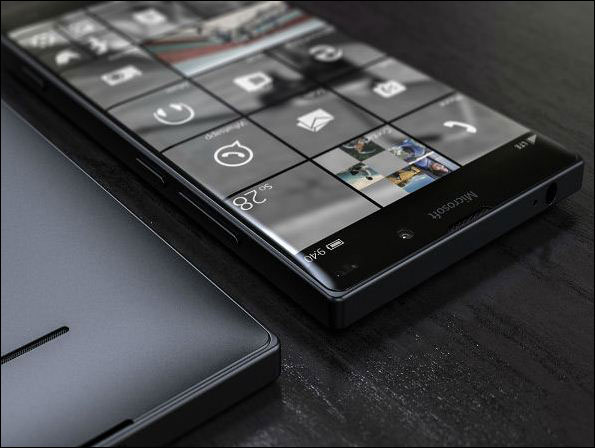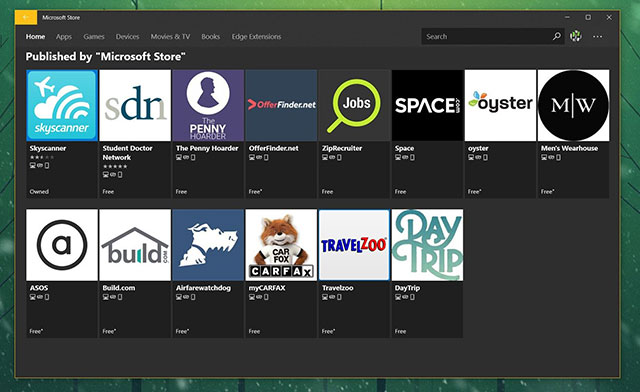Microsoft people explain why Windows on the phone failed
Microsoft's failure in Windows on mobile has become a fairy tale, told by observers, those who love and those who hate Microsoft.
Although the death of Windows 10 Mobile is undeniable, Microsoft's mobile strategy is always considering switching from mobile OS to Windows on Pocket PCs. This vision is being realized by Windows Core OS and folding devices are still rumored to be Project Andromeda.
- Andromeda - Microsoft's new folding device hopes to open a new market
- How is Microsoft turning Android into a mobile OS for Windows?
If Windows on the phone succeeds, perhaps Microsoft is still pursuing pocket PC vision. This is a very natural step of a connected computing world and the goal of a decade-old company.
In this context, Windows Manager Terry Myerson and former Windows Phone Development Manager Brandon Watson shared their thoughts on why Windows on the phone, not on mobile, failed.
Myerson led the Windows phone development team, now leaving Microsoft, sharing on LinkedIn.
'I know there is a lot of work to do with the Windows Mobile plan with no app store, no touch. I am honored but also afraid. Experience Windows Phone is really a challenge '.
Responding to the challenge, Microsoft has created a mobile user experience with Live Tiles, social networking integration, Hubs, Rooms and OS more loosely. But Windows phones still fail, according to Myerson because:
- The first Windows CE-based phones were incomplete, which was designed for small embedded systems.
- This industry goes faster than Microsoft can catch up.
- Android creates changes that break the business model.
Watson also mentioned the lack of support from OEMs and network providers on the list of reasons why Windows on the phone failed.
Windows Phone failed because it was almost impossible to beat Google and Apple if handset makers and network providers disapproved. We come later and are hardly supported by them. Can't keep burning money to push rocks to the top of the mountain forever. '
Joe Belfiore, head of Windows, said the application gap and limitations on device options were also the cause.
The idea is that Microsoft stopped investing in mobile because it was wrong to give up the phone. Mobile does not necessarily only have phones. Need to understand this to understand how Microsoft invests in mobile segment and Project Andromeda can solve the problem that Windows on the phone has failed.
- Microsoft's dream of Windows on phones is dead, now is the time for Plan B
- Microsoft's future is a smart mode on smart devices

Andromeda has more meaning than a simple folding device
Windows CE platform is incomplete
Windows CE limits the ability to put the power and flexibility of Windows into mobile form factor. OneCore unites Windows on different configurations, Core OS creates OS that changes with each type and status of the device. Project Andromeda has the ability to easily switch between phone, tablet, and computer modes.
Microsoft cannot catch up with the industry
Apple and Google have vendors, developers, customers, OEMs for years before Windows Phone 7 appeared.
As computers connect more and more and the phone market stagnates, the Always Connected PC and Project Andromeda-inspired devices are the first step for Microsoft and Qualcomm to step into the next phase of connection computing.
Android's ever-changing business model
Although Myerson did not say the details, perhaps he wanted to mention that the OS became free with OEM partners, and they were allowed to customize.
Microsoft has also let Windows free for OEMs with small devices. Core OS allows OEMs to only include the Windows features they want into their products. The various features of Windows 10, from Inking, games to mixed reality, and combining with innovative OEMs can make PC and phone manufacturers embrace similar devices like Andromeda.
With devices that are always connected, it's easier to transfer data purchased from Microsoft Store between network providers. Since then encourage them to use Cellular PC for their data.
- Microsoft and Qualcomm introduced Windows 10 running ARM chips all day without running out of batteries
- Microsoft revealed the limitations of Windows 10 running ARM
Application distance
Microsoft partnered with Google for Progressive Web Apps (PWS) and considered them as native applications on Windows 10. That means these hybrid web applications will function as the Universal Windows Platform application.

PWA application on Store
By getting information on the web, Microsoft started making Microsoft Store more popular by bringing PWA into the PWA Store. In addition, PWA is easy to build, maintain and operate multi-platform.
- What is Progressive Web App or PWA?
- YouTube's PWA application is available on Microsoft Store
It seems that Microsoft is having a mobile plan, fixing all the problems that they have failed with the Windows mobile plan. No one knows what the outcome will be, but the past failed to say anything in the future.
See more:
- All you need to know about mobile processors
- Microsoft is ready for a world farther than Windows
- Microsoft explains why folding phones will be the next big innovation of technology
You should read it
- Microsoft's dream of Windows on phones is dead, now is the time for Plan B
- Fix errors that automatically turn on WiFi on Windows 10 Mobile
- Microsoft will officially stop supporting Windows Phone, and check your device deadline
- How to share Windows 10 Mobile screen on PC via WiFi
- Microsoft confirms end of Office Apps support on Windows 10 Mobile
- Top 20 tips on Windows Phone
 Why does Microsoft's mobile future depend on eSIM?
Why does Microsoft's mobile future depend on eSIM? This is why you should be happy for having 5G
This is why you should be happy for having 5G 6 signs that Microsoft really loves Linux
6 signs that Microsoft really loves Linux 3 benefits of AI with businesses in the future
3 benefits of AI with businesses in the future Windows 10 April 2018 Update is the most error-prone release from Microsoft
Windows 10 April 2018 Update is the most error-prone release from Microsoft Windows revolution and breakthrough changes through each version
Windows revolution and breakthrough changes through each version